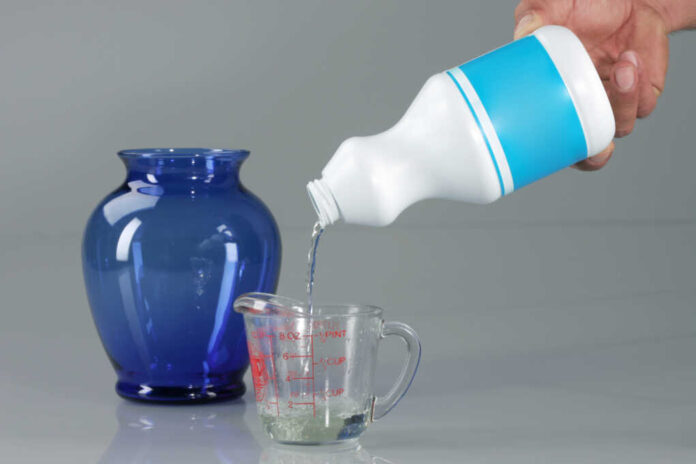
Household cleaning is a routine task, often performed without much thought about the potential hazards lurking in the bottles under the sink.
Among these, bleach stands out as a commonly used yet potentially harmful agent.
While most people already know that bleach can be harmful, less attention is given to the immediate steps required if or when it accidentally contacts the skin.
Understanding the Risks
Bleach is a powerful disinfectant composed of sodium hypochlorite. It’s effective in killing bacteria, viruses, and fungi, making it a popular choice for cleaning.
These same powerful chemical properties can be harsh and very dangerous on human skin.
When bleach contacts skin, it can cause irritation, burns, and even allergic reactions. The severity depends on the concentration of bleach and the duration of exposure.
Immediate Actions to Take
If you come in direct contact with bleach, follow these steps right away:
- Rinse with Water: The first and most critical step is to immediately rinse the affected area with lukewarm water. This dilutes and removes the bleach, reducing its harmful effects. Continue rinsing for at least 15-20 minutes.
- Remove Contaminated Clothing: If bleach has soaked through your clothes, remove them carefully to avoid further skin contact. Clothing can retain bleach and prolong skin exposure.
- Gentle Cleansing: After rinsing, gently cleanse the area with mild soap and water. This helps remove any remaining bleach without further irritating the skin.
- Pat Dry: Gently pat the skin dry with a clean towel. Avoid rubbing the skin, as this can cause further irritation.
Seeking Medical Attention
In cases of severe exposure, or if the skin reacts strongly (intense redness, blistering, swelling), seek medical attention immediately.
Delaying can lead to more severe skin damage or infections.
Preventative Measures
Any time you plan to use bleach, you should take steps to minimize the risk involved.
- Use Protective Gear: When handling bleach, always wear protective gloves and long-sleeved clothing. Eye protection is also recommended, as bleach splashes can harm your eyes.
- Proper Ventilation: Always use bleach in well-ventilated areas. This reduces the risk of inhaling fumes, which can also be harmful.
- Follow Instructions: Always read and follow the instructions on the bleach container. Proper dilution and usage are key to safe handling.
While bleach is an effective cleaning agent, respecting its chemical nature is crucial for your safety.
Immediate and appropriate actions following skin contact can prevent serious harm.
Adopting preventative measures can safeguard your health, making your interaction with this common but potent chemical much safer. Understanding the true nature of bleach — a powerful ally with potential risks — ensures its responsible and safe use.






















